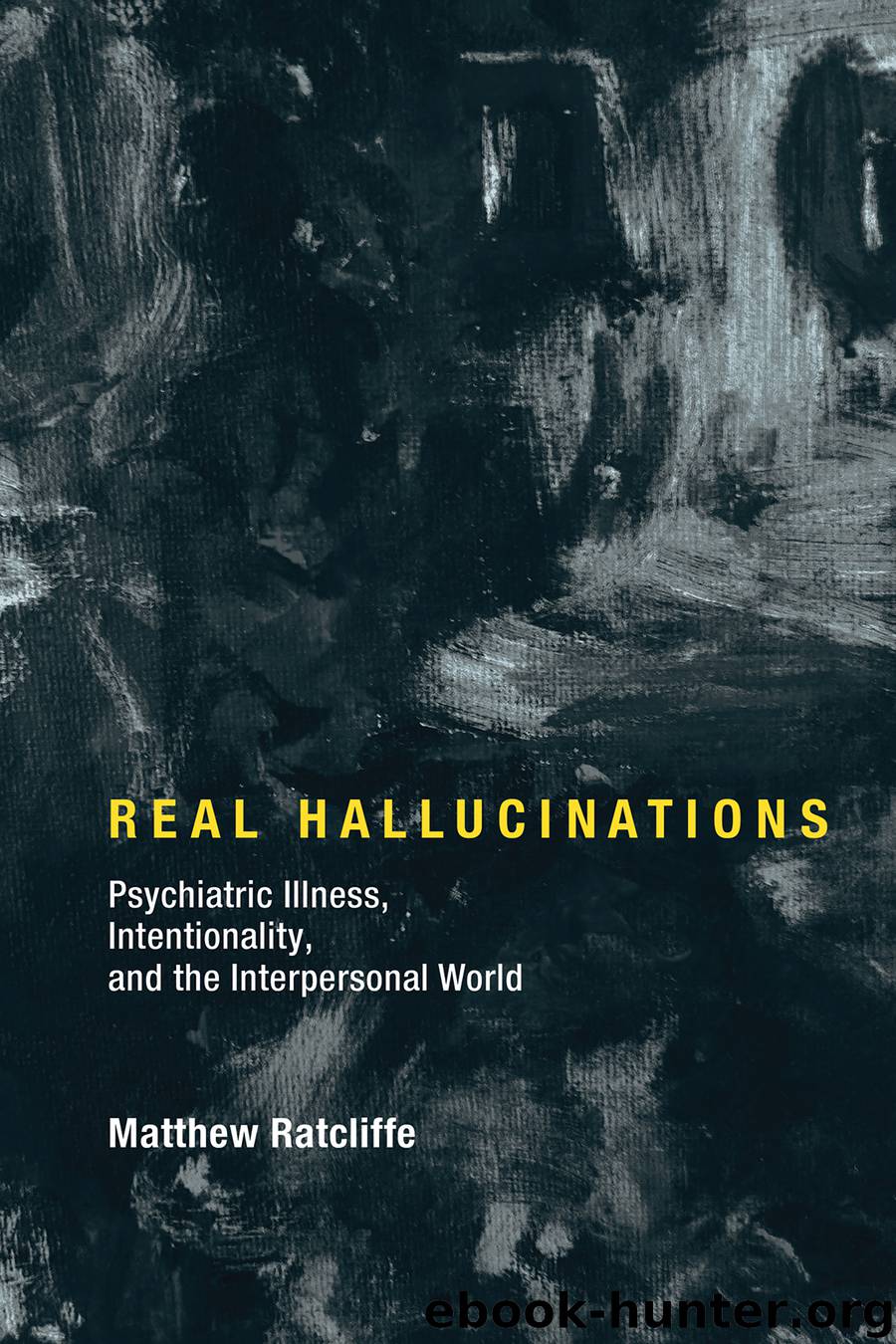Real Hallucinations by Matthew Ratcliffe

Author:Matthew Ratcliffe
Language: eng
Format: epub
Publisher: The MIT Press
Published: 2017-09-14T16:00:00+00:00
6.2 Ways of Believing
A pervasive alteration in what is anticipated from other people and from the world in general also affects the form of belief, the way in which a person believes. As we saw in chapter 5, Husserl (2001, §6, p. 67) notes that perception and belief share the same modalities, and suggests that this is no coincidence: the modal structures of both belief and perception depend on an overarching anticipatory style that is integral to practically engaged perceptual experience. Now, taking something to be the case in the form of a belief does not involve integrating it into the anticipation-fulfillment structure of perceptual experience, in the way that encountering it as present does. However, it does at least involve taking it to be part of a world in which one is rooted. And the sense of being rooted in a world is constituted by the global style of perceptual experience. Hence disturbances of perceptual style affect one’s grasp of what it is to be the case or otherwise, and much of what applies to perceptual experience applies equally to belief. In chapter 5, I considered both delusional atmosphere and traumatic experience, but left unresolved the issues of how (a) delusional atmosphere involves the interpersonal, and (b) delusional atmosphere is to be distinguished, phenomenologically, from traumatic experience. One might think that Jaspers’ account of schizophrenic delusions crystallizing out of an all-enveloping atmosphere is best construed in individualistic terms: a difficult-to-describe endogenous disturbance induces an unpleasant feeling of indeterminacy and tension, which is resolved through the formation of delusions with more determinate contents. However, in a short section entitled “Psychological Digression,” he offers the following remarks, which indicate the need to place more emphasis on the interpersonal and the social:
Normal convictions are formed in a context of social living and common knowledge. Immediate experience of reality survives only if it can fit into the frame of what is socially valid or can be critically tested. … The source for incorrigibility therefore is not to be found in any single phenomenon by itself but in the human situation as a whole, which nobody would surrender lightly. If socially accepted reality totters, people become adrift. … Reality becomes reduced to an immediate and shifting present. (Jaspers 1963, 104)10
At least three interrelated themes can be discerned here and further developed. First of all, beliefs are ordinarily formed in the context of relations with others, who provide testimony, instruction, confirmation, clarification, and correction. So, in the absence of these relations, belief-formation processes would be quite different. Second, where beliefs are not formed through interpersonal processes that align them with shared knowledge, their contents will differ. Third, and most important, the attitude of belief itself presupposes a grasp of the distinction between p being the case and p not being the case. Someone who lacked the usual sense of that distinction could not believe in quite the same way as those who take it as given. And Jaspers maintains that taking something to be the case ordinarily involves taking it to be part of a publically accessible, consensus world.
Download
This site does not store any files on its server. We only index and link to content provided by other sites. Please contact the content providers to delete copyright contents if any and email us, we'll remove relevant links or contents immediately.
The Art of Thinking Clearly by Rolf Dobelli(10306)
Mindhunter: Inside the FBI's Elite Serial Crime Unit by John E. Douglas & Mark Olshaker(9257)
Change Your Questions, Change Your Life by Marilee Adams(7673)
Nudge - Improving Decisions about Health, Wealth, and Happiness by Thaler Sunstein(7654)
Mastermind: How to Think Like Sherlock Holmes by Maria Konnikova(7273)
The Power of Now: A Guide to Spiritual Enlightenment by Eckhart Tolle(5672)
Men In Love by Nancy Friday(5190)
Altered Sensations by David Pantalony(5069)
Factfulness: Ten Reasons We're Wrong About the World – and Why Things Are Better Than You Think by Hans Rosling(4710)
The Confidence Code by Katty Kay(4213)
Thinking in Bets by Annie Duke(4179)
Man and His Symbols by Carl Gustav Jung(4091)
The Worm at the Core by Sheldon Solomon(3448)
Why Buddhism is True by Robert Wright(3418)
Liar's Poker by Michael Lewis(3408)
Three Women by Lisa Taddeo(3386)
The Inner Life of Animals by Peter Wohlleben(3282)
Descartes' Error by Antonio Damasio(3247)
How Music Works by David Byrne(3228)
